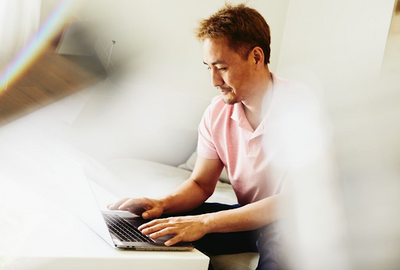looking after employee wellbeing is vital, and this has never been more important than during COVID-19.
New Zealand’s largest health insurer Southern Cross Health Society (SCHS) recognises that to have a flourishing business, you first need to ensure a flourishing workforce, and supporting the health and wellbeing of its people during the pandemic was of the utmost importance.
Like many workers in New Zealand when the country went into lockdown, SCHS employees were distanced from their teams as they relocated to individual bubbles to work remotely.
For many organisations, this posed a risk that the valuable human interaction and support that naturally occurs within an office environment would be reduced significantly. However, the not-for-profit organisation had switched into gear before New Zealand went into alert level 4 to ensure its people were properly supported during this period of unprecedented change.
Communication became an even more integral part of SCHS’s employee health and wellness strategy, especially in those early days when the transition to working from home was still new for many.
People were adjusting to a new life in lockdown and having to navigate the juggle between personal and work commitments – and this presented different challenges for different people depending on their home situation.

We ramped up our communications right from the beginning. Every single person received a call from their leader telling them to work from home, and actions were put in place to get laptops and other equipment to our people at home. We had people driving all over the city and couriers were delivering chairs, desks, and laptops. Luckily our digital teams had already completed testing before lockdown to ensure our entire organisation was enabled to work remotely in terms of IT systems.
There was also regular communication to employees directly from SCHS CEO Nick Astwick. The key focus of these communications was to check in on people, make sure they were okay, safe at home and that they had everything they needed to be able to work efficiently.
“We wanted to make sure that our people knew they were 100 per cent supported. What was going on in New Zealand and around the world was clearly unsettling and people were doing it tough in lots of different ways. We had some people having to entertain children, others were supporting elderly family members, and some were juggling work calls with flatmates at home. So, we wanted to make sure they were all set up, but mainly we wanted to ask if they were okay,” said Elliot.
When it comes to emotional wellbeing, Randstad’s research, ‘The Impact of COVID-19 on Workers and Organisations’, found that 52% of workers felt they were emotionally supported by their organisations during the pandemic.
SCHS took its employees’ health and wellbeing seriously during this uncertain time. In addition to regular communication, the organisation made sure that wellbeing activities continued to be available to its people.
“We already had a really amazing employee wellbeing programme in place called Switch2Well which we launched 11 years ago. We now have more than 90 per cent of our people actively participating in Switch2Well, and we offer a range of options that encompass mind health, physical and financial wellbeing and community support activities. When we first went into lockdown, we moved quickly to deliver a range of new initiatives that would help to meet the needs of our people during what was an extremely challenging time” said Elliot.
SCHS created additional internal resources for its employees and their whānau so they could access wellbeing advice. They also offered mindfulness and meditation sessions and twice-weekly online yoga classes, which were then extended to the end of 2020.
“From a health and safety point of view, we wanted to emphasise that just because you are not in the office, it remained important to take regular breaks. We didn’t want people feeling that they had to sit at their desk all day or work extra hours. This information became a tool for our people, and it was also helpful for our leaders in giving them consistent messaging to refer to when talking to their teams,” Elliot said.
SCHS knew the activities they were providing were well received.
“During the first lockdown we ran short, sharp pulse checks each week that were purely focused on enablement to make sure our employees had everything they needed and felt supported.
“Employee participation was around 90 percent for these weekly surveys, and we received incredible feedback on the support we offered. There was a lot of engagement with the new initiatives, and the yoga and meditation sessions in particular were really popular. We’re now using this information to further evolve our Switch2Well programme in 2021,” added Elliot.
The move to hosting online seminars, which used to be face-to-face, saw an increase in participation.
During the pandemic, Randstad’s research found that 41% of employees spent less time in meetings and 39% were able to make more time for themselves while working remotely. And most employers (66%) want to keep remote working at the forefront of their operations when the COVID-19 pandemic subsides.
Moving forward, SCHS is continuing with its flexible working model, something they were already actively offering to its people before the outbreak of COVID-19.
In late 2020, the organisation moved to new premises. The office space is set up to support activity-based ways of working and has a range of spaces available for people to make choices about where to work to get the best outcomes.
“There was no expectation on our people to come back to the office full-time when we moved into our new office last October,” Elliot said. “Our ways of working have changed quite considerably and now that we’ve enabled everyone to work from home, people have realised work can be done from home, and it’s easy.”
With a flexible arrangement, employees are empowered to have control of their own calendar, and the office becomes a hub for meetings, team projects and an area to help employees concentrate on their work.
The entire exercise has proven this transition can be made without seeing a drop in productivity.
“It comes down to trusting your employees,” Elliot said. “We have given our leaders quite a lot of support on how to manage remote workers and how to manage a team when you can’t see them all. But it all really comes down to trust.
“We’ve found that our people have been really happy and engaged with this new way of working, and it’s actually worked well. It’s a win-win for both our organisation and our people.”


